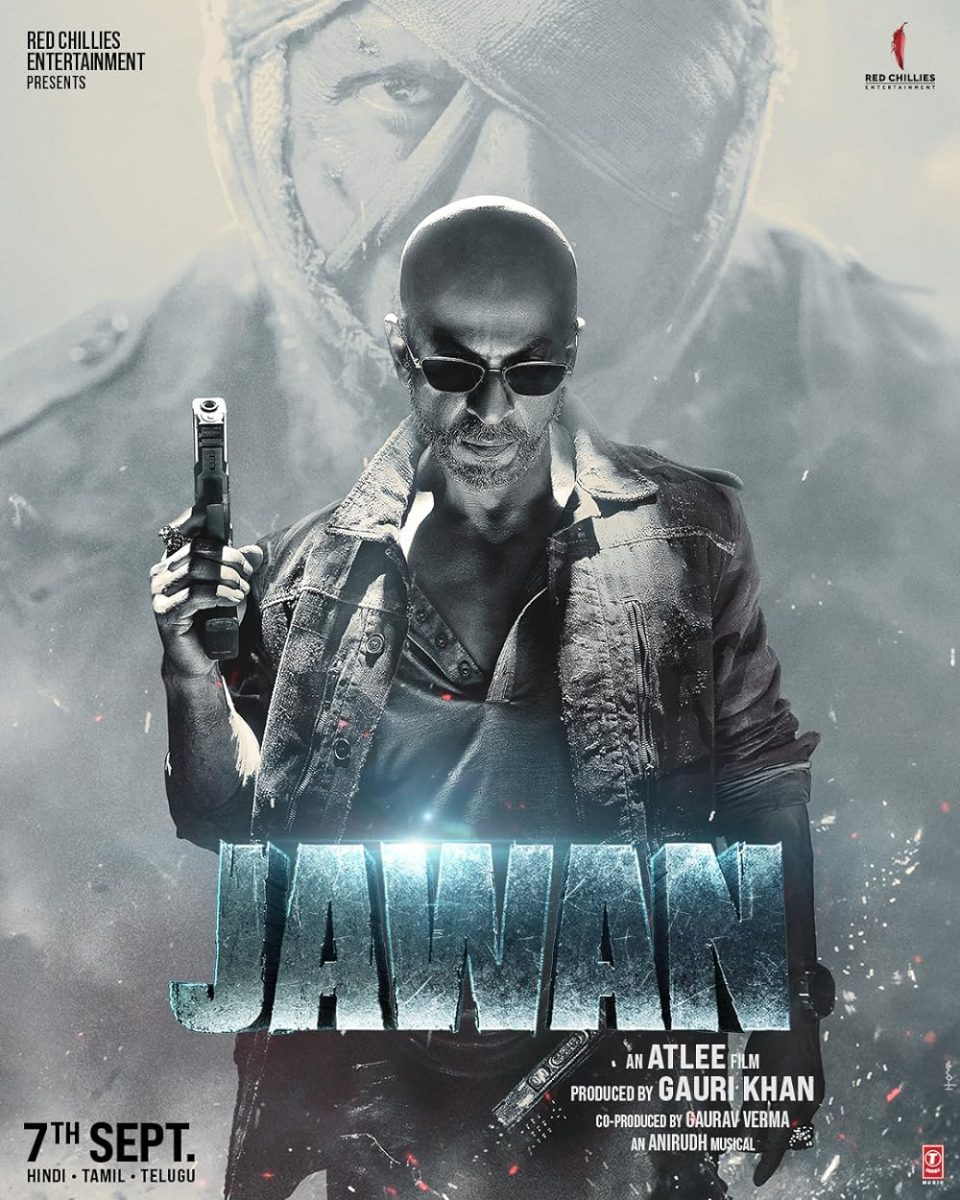Though this review mentions notions surrounding the Indian government, it is meant to be apolitical — in particular, it is not an endorsement nor a condemnation of Congress, the BJP or any other major Indian political party.
India has been often described as a strong society with a weak state. Familial bounds, community ties, and neighbors’ amity dominate over the central government’s distant bureaucracy and slow, ineffective responses to crises. In modern Bollywood, nowhere is this sentiment more present than in Atlee’s “Jawan”, an enthralling tale of a band of Robin Hood-esque terrorists fighting against a corrupt Indian government.
Don’t get me wrong: The movie’s writing is a bit far-fetched and convoluted. If you’re someone who despises plot armor, then you might wince a few times watching it (available in English on Netflix), and so many storylines and flashbacks intersect in the film that it is at times difficult to understand what’s going on. And yet, if you pay close attention, it becomes a poignant masala film detailing the longtime struggle against corruption in India. (That’s the end of my general remarks, by the way — if you don’t want spoilers for the movie, I suggest you stop reading right here.)
Despite its provocative messaging, “Jawan” starts out just like any other famous Bollywood movie: action shots and unnecessary violence. We’re introduced to the main cast — headed by a prison warden named Azad — clad in black in the Delhi metro. Within just the first ten minutes, the movie goes through them hijacking a Delhi train, staging the fake killing of a woman (who happens to be a member of the crew), and extorting the Central government for 40,000 crore rupees ($5 billion).
At this point, we’re clearly rooting against these murderous villains and for the government just trying to do its job. But two sudden twists follow: Azad insists that the Agriculture Minister, specifically, pay the $5 billion, and we see the backstory of one of the girls working for him: Her father was brutally beaten by thugs sent by that same Agriculture Minister and humiliated in front of his village. After he took his life, his daughter exacted revenge by smacking one of said thugs in the face (more violence!).
That plus what Azad does with the money he gains (paying off 700,000 farmers’ debts) immediately alerts us to who the real villains and protagonists are in this story. The rest of the movie continues in a similar fashion, with Azad’s team performing similar stunts with the Health minister and election administrators. Before the final, Bollywood-mandated fight scene between Azad’s team and supporters of the government-aligned arms dealer Kalee Gaikwad, we learn about Azad’s backstory: His father served in the Indian military and his entire unit was killed during a special ops mission during which their guns malfunctioned. The supplier of the guns? Kalee.
But despite the intense story (and trailer), “Jawan” isn’t without its lighthearted scenes. In the middle of the movie, Azad’s all-women prison breaks out into song and dance for a full five minutes (Bollywood is wild), and right before this, we see a heart-warming scene of Azad bonding with the daughter of a woman he met on a dating app (who also happens to be an agent of the Indian government hunting him down until she switches sides — talk about mixed feelings).
Beyond raw action, “Jawan” represents several modern Indian movements, chief among which is the empowerment of women. From ancient empresses of the Chola dynasty to the controversial yet consequential Indira Gandhi, women have often been at the top of Indian power structures, but societal expectations and traditions meant the goal of a truly equitable society has remained elusive. In recent years especially, the growing annual income of Indians has ironically meant that often only one person needs to work to support a household, leading to lower female workforce participation. Azad and his all-female crew, however, stand to inspire millions of children in India to break free of traditional societal expectations and pursue not only “atypical” careers but also advocacy work.
Furthermore, “Jawan” rails against corruption via examples that are portrayals of very real scandals that shocked the Indian public. One of the most tragic moments of the film — dozens of children dying in a hospital that was not provided with the oxygen tanks necessary to keep them alive — is a direct reference to the 2017 “Gorakhpur incident,” in which the state government allegedly did not pay off dues to the company supplying oxygen to hospitals. Despite that (and this is where we see India’s “strong society” come in), the company continued to supply oxygen that was purportedly not handled properly by the government.
But the movie isn’t just a pantheon of doom and gloom. Beyond moving backstories and infuriating scandals, “Jawan” cultivates a sense of shared responsibility: The “terrorists” are rarely alone in their plotting, instead aided by ordinary citizens, the news, or even agents of the government — for example, while attempting to reform the healthcare system (by kidnapping the Minister of Health), Azad’s team takes shelter in the barn of a farmer they helped pay off the debt of.
Of course, I’d be remiss if I didn’t acknowledge what some consider to be the weak points of the movie: Beyond its physically impossible stunts, copious fight sequences, and its High School Musical-esque breakout dances, many decry its messaging. There’s just something about using terror as an instrument for good that doesn’t sit right with many — violence generally begets more violence after all. But detractors of that argument might counter that not only had Azad’s team lost all means of political power, but they refused to injure any innocent civilians — thus perhaps the moniker “terrorists” is not quite correct for them.
Regardless of terminology, “Jawan” holds important messaging for the entire world — not just India. In an increasingly polarized and even hopeless world — where climate change and war appear like insurmountable problems — it reminds us that there are still those fighting for what’s right. It reminds us that hope, that defining characteristic of humanity and instrument of survival, still reigns supreme.


